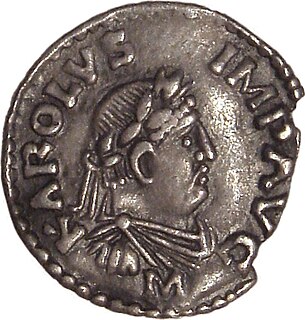This article needs additional citations for verification .(April 2019) (Learn how and when to remove this template message) |
This is a family tree of the Roman Emperors, showing only the relationships between the emperors.
This article needs additional citations for verification .(April 2019) (Learn how and when to remove this template message) |
This is a family tree of the Roman Emperors, showing only the relationships between the emperors.
The emperors from Augustus to Commodus can be organised into one large family tree.
The emperors from Pertinax to the beginning of the Crisis can be organised into one large dynasty (see Severan dynasty family tree), one smaller family and two unrelated emperors.
| Pertinax 126-192-193 | Didius Julianus 133-193-193 | ||||||||||||||||||||||||||||||||||||||
| Septimius Severus 145-193-211 | Julia Domna 160–217 | Julia Maesa 165–224 | Macrinus 165-217-218 | ||||||||||||||||||||||||||||||||||||
| Caracalla 188-198-217 | Geta 189-209-211 | Julia Soaemias 180–222 | Julia Avita Mamaea 180–235 | Diadumenian r. 218 | |||||||||||||||||||||||||||||||||||
| Elagabalus 203-218-222 | Alexander Severus 208-222-235 | ||||||||||||||||||||||||||||||||||||||
The emperors during the fifty-year period of the Crisis can be organised into seven families and seven unrelated emperors, although no family held power for more than fifteen years.
| Maximinus Thrax 173-235-238 | Gordian I 159-238-238 | Pupienus 178-238-238 | Balbinus 165-238-238 | ||||||||||||||||||||||||||||||||||||||||||||||||||
| Gordian II 192-238-238 | Antonia Gordiana b. 201 | Philip the Arab 204-244-249 | Decius 201-249-251 | Trebonianus Gallus 206-251-253 | |||||||||||||||||||||||||||||||||||||||||||||||||
| Aemilianus 210-253-253 | Gordian III 225-238-244 | Valerian 200-253-260 | Herennius Etruscus 227-251-251 | Hostilian 230-251-251 | Volusianus r. 251–253 | ||||||||||||||||||||||||||||||||||||||||||||||||
| Claudius Gothicus 213-268-270 | Quintillus 220-270-270 | Gallienus 218-253-268 | Aurelian 214-270-275 | Tacitus 200-275-276 | Florianus r. 276 | ||||||||||||||||||||||||||||||||||||||||||||||||
| Probus 232-276-282 | Carus 230-282-283 | ||||||||||||||||||||||||||||||||||||||||||||||||||||
| Carinus r. 283–285 | Numerian r. 283–284 | ||||||||||||||||||||||||||||||||||||||||||||||||||||
The emperors from the founding of the Dominate in 284, in the West until 476 and in the East until 518, can be organised into one large dynasty plus ten unrelated emperors.
| Diocletian 244-284-305-311 | |||||||||||||||||||||||||||||||||||||||||||||||||||||||||||||||||||||||||||||
| Severus r. 306–307 | Afranius Hannibalianus | Eutropia d. 325 | Maximian 250–310 r. 286–305, 306–8 | Valeria | Galerius 260-305-311 | unknown wife | unknown sister | ||||||||||||||||||||||||||||||||||||||||||||||||||||||||||||||||||||||
| Theodora | Constantius Chlorus 250-305-306 | Helena of Constantinople 250–330 | Maxentius 278-306-312 | Valeria Maximilla | Maximinus 270-311-313 | ||||||||||||||||||||||||||||||||||||||||||||||||||||||||||||||||||||||||
| Julius Constantius d. 337 | Licinius 250-308-324-325 | Constantia 293–330 | Constantine I 272-313-337 | Fausta 289–326 | Valerius Valens r. 316–317 | Martinian r. 324 | |||||||||||||||||||||||||||||||||||||||||||||||||||||||||||||||||||||||
| Julian 331-360-363 | Helena d. 360 | Constantine II 316-337-340 | Constantius II 317-337-361 | Constans 320-337-350 | Marina Severa d. 375 | Valentinian I 321-364-375 | Justina d. 388 | Valens 328-364-378 | |||||||||||||||||||||||||||||||||||||||||||||||||||||||||||||||||||||
| Jovian 331-363-364 | Constantia 361–383 | Gratian 359-367-383 | Aelia Flaccilla d. 385 | Theodosius I 347-379-395 | Galla d. 394 | Valentinian II 371-375-392 | |||||||||||||||||||||||||||||||||||||||||||||||||||||||||||||||||||||||
| John r. 423–424 | Honorius 384-393-423 | Arcadius 377-383-408 | Galla Placidia 392–450 | Constantius III r. 421 | |||||||||||||||||||||||||||||||||||||||||||||||||||||||||||||||||||||||||
| Avitus 385-455-456 | Majorian 420-457-461 | Libius Severus r. 461–465 | unknown wife | Marcian 396-450-457 | Pulcheria 399–453 | Theodosius II 401-408-450 | |||||||||||||||||||||||||||||||||||||||||||||||||||||||||||||||||||||||
| unknown brother | Leo I 401-457-474 | Verina d. 484 | Basiliscus d. 477 r. 475-76 | Marcia Euphemia | Anthemius 420-467-472 | Petronius Maximus 396-455-455 | Licinia Eudoxia 422–462 | Valentinian III 419-425-455 | |||||||||||||||||||||||||||||||||||||||||||||||||||||||||||||||||||||
| unnamed niece of Leo I | Julius Nepos 430-474-480 | Zeno 425–491 r. 474–475, 476–491 | Ariadne 450–515 | Anastasius I 430-491-518 | Leontia | Marcian | Olybrius 430-472-472 | Placidia | |||||||||||||||||||||||||||||||||||||||||||||||||||||||||||||||||||||
| Romulus Augustus 462-475-476 | Leo II 467-474-474 | Glycerius 420-473-474-480 | |||||||||||||||||||||||||||||||||||||||||||||||||||||||||||||||||||||||||||

Caligula, formally known as Gaius, was the third Roman emperor, ruling from AD 37 to 41. The son of the popular Roman general Germanicus and Augustus' granddaughter Agrippina the Elder, Caligula was born into the first ruling family of the Roman Empire, conventionally known as the Julio-Claudian dynasty. Germanicus' uncle and adoptive father, Tiberius, succeeded Augustus as emperor of Rome in AD 14.

Around the start of the Common Era, the family trees of the gens Julia and the gens Claudia became intertwined into the Julio-Claudian family tree as a result of marriages and adoptions.

The Severan dynasty was a Roman imperial dynasty, which ruled the Roman Empire between 193 and 235, during the Roman imperial period. The dynasty was founded by the emperor Septimius Severus, who rose to power after the Year of the Five Emperors as the victor of the civil war of 193–197, and his wife Julia Domna. After the short reigns and assassinations of their two sons, Caracalla and Geta who succeeded their father in the government of the empire, Julia Domna's relatives themselves assumed power, raising first Elagabalus and then Severus Alexander to the imperial office.

The Holy Roman Emperor, originally and officially the Emperor of the Romans during the middle ages, and also known as the German-Roman Emperor since the early modern period, was the supreme head of state and ruler of the Holy Roman Empire. The Empire was considered by the Roman Catholic Church to be the only legal successor of the Roman Empire during the Middle Ages and the early modern period. The title was held in conjunction with the title of King of Italy from the 8th to the 16th century, and, almost without interruption, with the title of King of Germany throughout the 12th to 18th centuries.

The following outline is provided as an overview of and topical guide to ancient Rome:

Nero Claudius Drusus Germanicus, also called Drusus the Elder, was a Roman politician and military commander. He was a patrician Claudian on his birth father's side but his maternal grandmother was from a plebeian family. He was the son of Livia Drusilla and the legal stepson of her second husband, the Emperor Augustus. He was also brother of the Emperor Tiberius, father to both the Emperor Claudius and general Germanicus, paternal grandfather of the Emperor Caligula, and maternal great-grandfather of the Emperor Nero.

The Roman emperor was the ruler of the Roman Empire during the imperial period. The emperors used a variety of different titles throughout history. Often when a given Roman is described as becoming "emperor" in English, it reflects his taking of the title Augustus or Caesar. Another title often used was imperator, originally a military honorific. Early emperors also used the title Princeps Civitatis. Emperors frequently amassed republican titles, notably princeps senatus, consul and pontifex maximus.

Laurus nobilis is an aromatic evergreen tree or large shrub with green, glabrous smooth leaves, in the flowering plant family Lauraceae. It is native to the Mediterranean region and is used as bay leaf for seasoning in cooking. Its common names include bay tree, bay laurel, sweet bay, true laurel, Grecian laurel, or simply laurel. Laurus nobilis figures prominently in classical Greco-Roman culture.
A regnal name, or reign name, is the name used by monarchs and popes during their reigns and, subsequently, historically. Since ancient times, some monarchs have chosen to use a different name from their original name when they accede to the monarchy.

In historiography, ancient Rome is Roman civilization from the founding of the Italian city of Rome in the 8th century BC to the collapse of the Western Roman Empire in the 5th century AD, encompassing the Roman Kingdom, Roman Republic and Roman Empire until the fall of the western empire. The civilisation began as an Italic settlement in the Italian Peninsula, traditionally dated to 753 BC, that grew into the city of Rome and which subsequently gave its name to the empire over which it ruled and to the widespread civilisation the empire developed. The civilization was led and ruled by the Romans, alternately considered an ethnic group or a nationality. The Roman Empire expanded to become one of the largest empires in the ancient world, still ruled from the city, with an estimated 50 to 90 million inhabitants and covering 5 million square kilometres at its height in AD 117.

Nero Julius Caesar was the adopted grandson and heir of the Roman Emperor Tiberius, alongside his brother Drusus. Born into the prominent Julio-Claudian dynasty, Nero was the son of Tiberius' general and heir, Germanicus. After the deaths of his father and of Tiberius' son, Drusus the Younger, Nero and his brother Drusus were adopted together by Tiberius in September AD 23. As a result of being heirs of the emperor, he and his brother enjoyed accelerated political careers.

The Principate is the name sometimes given to the first period of the Roman Empire from the beginning of the reign of Augustus in 27 BC to the end of the Crisis of the Third Century in 284 AD, after which it evolved into the so-called Dominate.

Gaius Octavius was a Roman politician.

The Nerva–Antonine dynasty was a dynasty of seven Roman Emperors who ruled over the Roman Empire from AD 96 to 192. These Emperors are Nerva, Trajan, Hadrian, Antoninus Pius, Lucius Verus, Marcus Aurelius, and Commodus. The first five of them are commonly known as the "Five Good Emperors".

The Electorate of Saxony was a state of the Holy Roman Empire established when Emperor Charles IV raised the Ascanian duchy of Saxe-Wittenberg to the status of an Electorate by the Golden Bull of 1356. Upon the extinction of the House of Ascania, it was feoffed to the Margraves of Meissen from the Wettin dynasty in 1423, who moved the ducal residence up the river Elbe to Dresden. After the Empire's dissolution in 1806, the Wettin Electors raised Saxony to a territorially reduced kingdom.

The history of the Roman Empire covers the history of ancient Rome from the fall of the Roman Republic in 27 BC until the abdication of Romulus Augustulus in AD 476 in the West, and the Fall of Constantinople in the East in AD 1453. Ancient Rome became a territorial empire while still a republic, but was then ruled by Roman emperors beginning with Augustus, becoming the Roman Empire following the death of the last republican dictator, the first emperor's adoptive father Julius Caesar.

Nerva was Roman emperor from 96 to 98. Nerva became emperor when aged almost 66, after a lifetime of imperial service under Nero and the rulers of the Flavian dynasty. Under Nero, he was a member of the imperial entourage and played a vital part in exposing the Pisonian conspiracy of 65. Later, as a loyalist to the Flavians, he attained consulships in 71 and 90 during the reigns of Vespasian and Domitian, respectively.